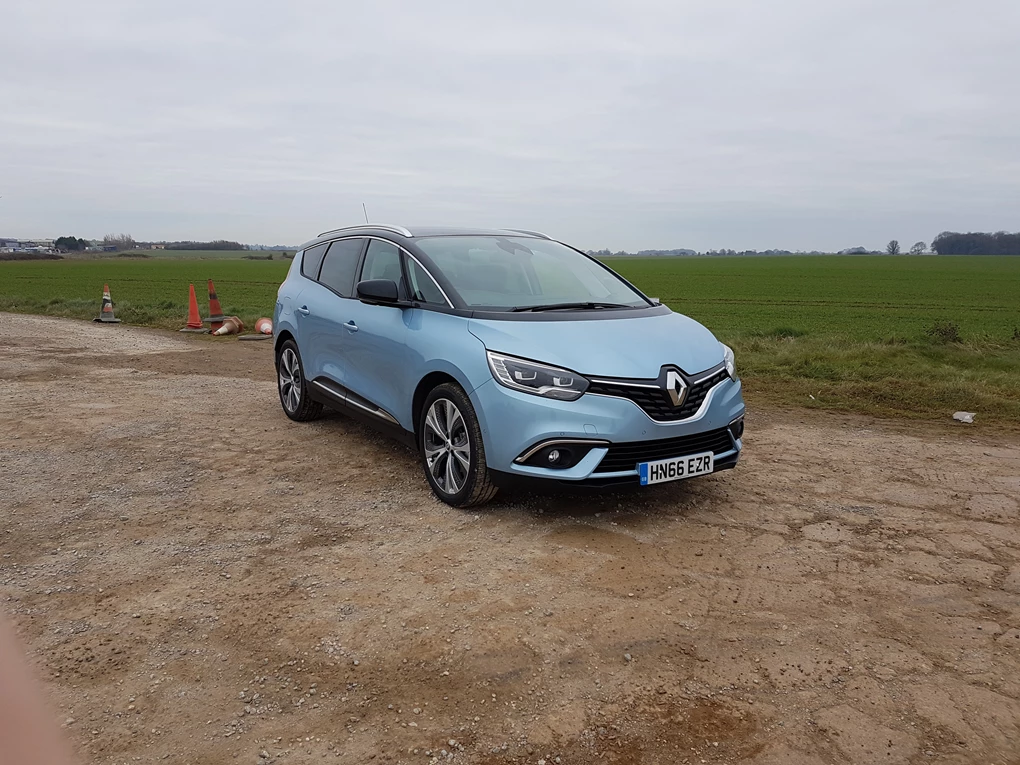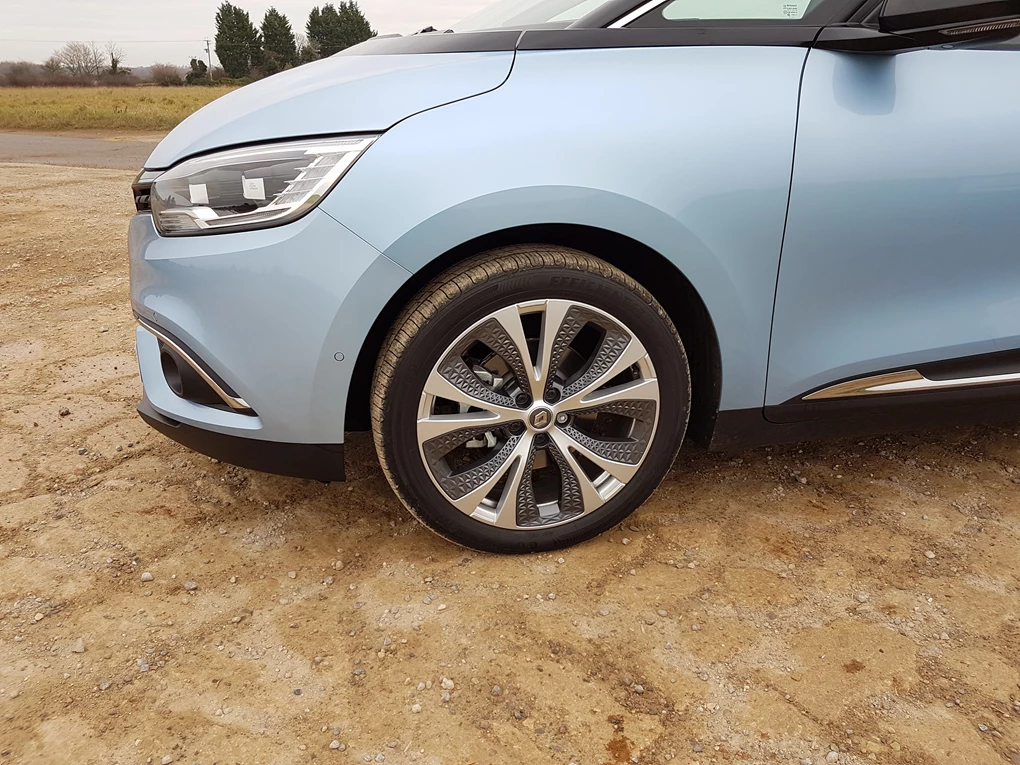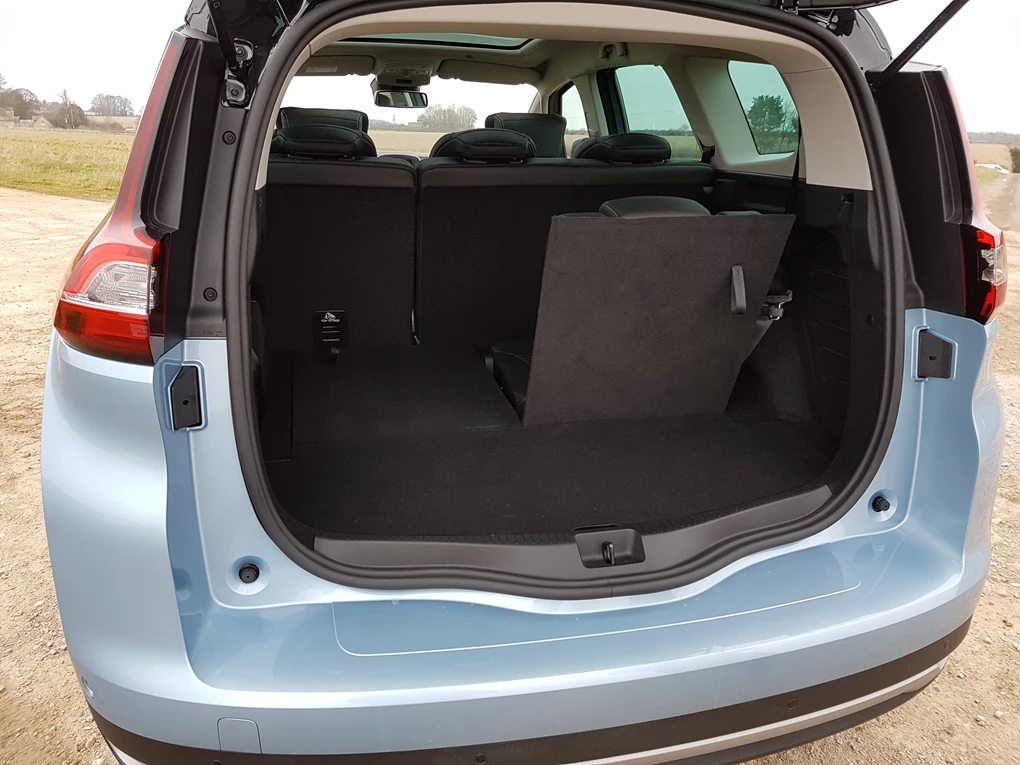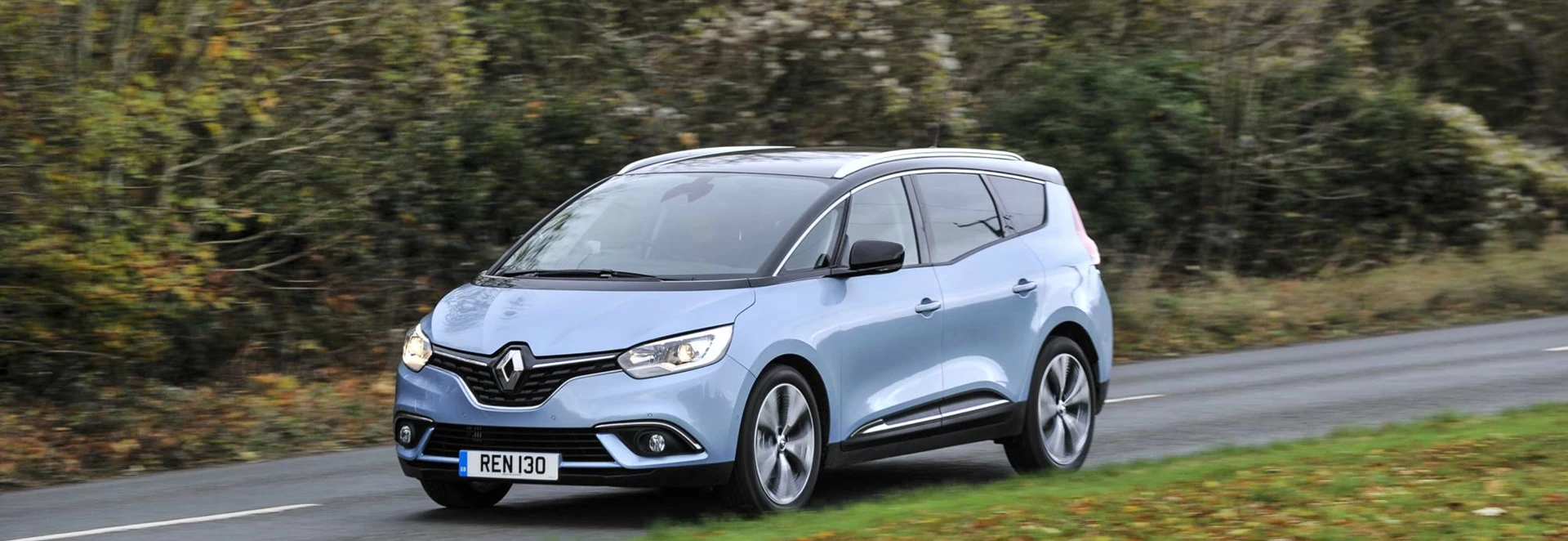Renault has introduced a new Scenic MPV which means a larger variant called the Grand Scenic once again follows suit.
The first thing people are likely to notice about the new Scenic’s range is the MPV’s bold new looks. Features like the steeply-raked windscreen and massive 20-inch wheels makes this a very different looking car to previous Grand Scenics, and give the MPV a better chance of looking fresh next to the wave of crossovers which are attracting family car buyers.
Compared to the regular Scenic, the Grand Scenic’s wheelbase is 70mm longer and the car is 228mm longer overall. That’s enough of a size difference for the Grand Scenic to add two extra seats at the back, making this a seven-seater MPV of course.
There are some other big, modern-looking MPVs the latest Grand Scenic must take on though, including the Citroen Grand C4 Picasso and Ford S-MAX.

Performance
The Grand Scenic is offered with several 1.6-litre diesel units, with outputs of 108bhp, 128bhp and 158bhp available. There’s also a 1.2-litre turbo petrol in the range and a 108bhp diesel-hybrid powertrain is due to be available from spring 2017.
It’s the diesel units that are expected to rake in most of the sales, and we tested the 128bhp version from this particular line-up. It’s hooked up to a six-speed manual gearbox as standard and delivers an unspectacular but reasonable 0-62mph sprint time of 11.4 seconds.
MPV engines are rarely exciting, but there’s at least a reasonable amount of pull during the initial get-go, and the engine does feels well suited to the car in virtually all driving situations you’ll likely encounter.
We’ve tested the 108bhp diesel in the slightly smaller Scenic and the difference in performance between that and the engine here does feel very marginal. Having said that, the 128bhp diesel requires less shove to deal with uphill sections so we’d recommend this unit more especially for the bigger Grand Scenic.
Even with this unit though, it does take some force to get up slopes convincingly, so you may even want to consider the 158bhp diesel if you have the budget for it.

Ride and Handling
Compared to the slightly smaller Scenic, the Grand Scenic feels ever so slightly more poised.
The Renault Grand Scenic offers decent grip levels and the steering is light but also has a reasonable amount of feel, so driving through city roads or any low-speed areas feels easy-going. Compared to the slightly smaller Scenic, the Grand Scenic feels ever so slightly more poised. While the standard 20-inch wheels may worry some in regards how it’ll disrupt the ride, it’s really not as bad as you may fear. Having said that there is some noticeable bumpiness and body roll when you’re on higher-speed roads. Also, while the engine is quiet, a lot of wind noise does build up once you’re near motorway speed levels. It’s not quite as poised or refined as the likes of the Grand C4 Picasso or S-MAX, but it doesn’t feel massively behind them and is still more relaxing than quite a few other large MPVs we’ve driven in recent years.

Interior and Equipment
The Renault Grand Scenic was first introduced as part of the second-generation Scenic range in 2004, eight years after the original French MPV was introduced to the world.
The array of hard plastics and soft-touch materials which are virtually all in black give the Grand Scenic’s cabin a much more understated feel compared to the exterior. But the vast majority of materials feel high quality and the cabin has an overall professional, decluttered vibe to it. Even though the roofline is lower than previous Scenics and slopes in an almost coupe-like manner, there’s plenty of headroom all round. While the five-seater Scenic doesn’t have a great deal of legroom behind the driver and front passenger, it’s a different (and better) story with the Grand Scenic thanks to the lengthier wheelbase. The two additional rearmost seats are easy to fold or deploy, but they are awkward to try and sit in and offer little legroom. We’d only recommend sitting small children in these seats. Fold the two rear seats flat, you get a useful 596 litres of boot space to use, more than enough for a week’s worth of shopping. Even with the third-row of seats up, you get a respectable 233 litres of load capacity. It’s not quite as much compared to the S-MAX with all of its seats up, but to put things more in perspective, that figure is almost as much as you get from most current superminis. The Grand Scenic we tested came in the Dynamique S Nav trim, which sits above the Expression+ and Dynamique Nav trims and only below Signature Nav. You already get a decent amount of standard kit for a car of this class. The one we tested has highlights like a panoramic sunroof, dual-zone climate control and Renault’s R-Link 2 multimedia system with an 8.7-inch portrait touchscreen plus Bluetooth and sat-nav included.
Cost
Fuel economy for this specification is respectable for a car of this size and competitive next to other diesel competitors, officially recording 61.4mpg combined.
The Renault Grand Scenic starts at £23,375, while the Dynamique S dCi 130 model we tested begins from £28,445. That sort of pricing is not dissimilar to higher trim level versions of other seven-seater MPVs like the S-MAX, Grand C-MAX or Grand C4 Picasso. Fuel economy for this specification is respectable for a car of this size and competitive next to other diesel competitors, officially recording 61.4mpg combined. The CO2 output meanwhile is also not too shabby at 119g/km. If you want even better figures though, then the 108bhp diesel does return 70.6mpg combined and emits just 104g/km in CO2.
Our Verdict
The latest Renault Grand Scenic feels like a noteworthy step forward compared to its predecessor, which it needed to be to stay relevant next to the wave of crossovers that have proved popular lately. It looks interesting, drives in a composed manner and has a smart cabin with plenty of room for front and middle passengers. Is it worth choosing the Grand Scenic ahead of the five-seater Scenic? If you feel the latter is too lacking in room directly behind the front seats and you have kids which could make use of the extra seats, then the Grand Scenic makes a whole lot of sense. How does the Grand Scenic measure up next to alternatives? Pretty well overall. You could argue the likes of the S-MAX and Grand C4 Picasso have more poise or refinement, but the latest Grand Scenic doesn’t feel far behind the best in these areas and its running costs and cabin can hold their own. MPV buyers shouldn’t necessarily feel guilty then if they opt for the Renault for its eye-catching new styling.




